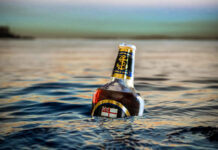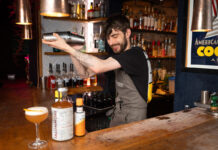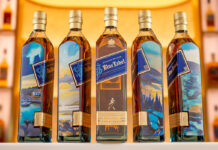
Small batches credited with breathing new life into category
THE gin market has been bustling with activity lately.
A host of new variants and limited editions from established brands and small-batch products from independents (many from Scotland) have hit the market, breathing new life into the category.
As a result, operators have an unprecedented range to choose from, giving consumers the chance to explore gin like never before.
Andy Gemmell at Maxxium UK, which added the Berry Brothers & Rudd-owned ‘super-premium’ No 3 London Dry Gin to its portfolio in June, told SLTN gin’s fortunes are very much on the up.
“Gin has become really popular recently – there are a lot of new gins coming out and I think consumers see it as a sophisticated drink,” he said.
“It’s lost the stigma it had a few years ago of being something your Aunty Mary drank; I think people see it as a sophisticated drink now.
“Three or four years ago most back-bars only had three or four gins, now some bars have more gin than vodka – that’s a real turnaround.”
The firm behind Darnley’s View – one of the newest small batch gins on the market – reckons the premium and super premium end of the gin category is particularly buoyant.

Susan Colville, regional sales manager at Wemyss Malts, which launched the 40% gin in May 2010, said consumers are increasingly interested in product provenance.
“Ingredients are becoming more important to consumers and those gins experimenting with new botanicals, for example elderflower in Darnley’s View, are definitely benefiting,” she said.
“Hendrick’s clearly led the way in opening up the use of new botanicals.
“Consumers are definitely becoming more knowledgeable on boutique, small batch and craft spirits, seeking out more interesting alternatives to the standard house pours.
“Mixologists are also leading the charge here with the use of different and more specialist spirits, like some of the newer Scottish gins, offering more unusual flavours as a springboard for their menus.
“Social media is also giving consumers and trade customers access to more information regarding the provenance of brands.”
The traceability of ingredients is top of the agenda for Islay distiller Bruichladdich, which launched its first gin – The Botanist – late last year.
Twenty two of the 31 botanicals used in the 46% ABV gin are native to the island, including wild Islay juniper.
Distillery boss Mark Reynier said the ingredients are everything to the brand.
“We’ve exceeded our sales expectations for the year already,” he told SLTN.
“What we’ve created is something with integrity and traceability. It’s not just a rebadged gin; it’s not a flash in the pan.
“We’ve nailed our colours firmly to the mast – we thrive on traceability, authenticity and integrity.
“This is a real gin with genuine flavours and proper gin botanicals.
“We’re very encouraged by the reception so far. It shows it’s not all about the big brands, there is a demand for niche products.”
And it seems the longer-established gin brands are also seeing positive sales. Sharon Reid, marketing controller for Bombay Sapphire gin, said the brand has benefitted from the trend for ‘trading up’.
“If people are out in a bar, they are choosing higher quality drinks and are happy to pay a premium for these,” she said.
“Bars are able to offer higher quality drinks, which, combined with great service, means they are able to charge a slightly higher premium.”
It’s advice echoed by David McGowan, national commercial manager at Diageo GB, who told SLTN demand for premium gin brands remains high.
“Gordon’s as a brand is holding up well in the market conditions,” he said.
“We’ve also had a number of people coming to us and asking to get involved with Tanqueray as a brand.
“We have that ladder of Gordon’s, Tanqueray and Tanqueray Ten and we have a number of accounts now pouring with Tanqueray.
“We’re seeing significant increases and I think the trend for trading up to premium brands will continue.”
Una McCullough, marketing director at First Drinks, agrees.
“There are a lot of premium gins available now and people are showing a real interest in it,” she told SLTN.
“Hendrick’s is doing really well and consumers are now asking for a Hendrick’s and tonic with cucumber, which is great.
“We’re really focused in the on-trade with Hendrick’s. It offers a different taste and different flavours and it has that provenance – people know where it came from.”
Gin at a glance
• Gin was worth £321m in the GB on-trade last year, down 2%.
• Over 118,000 GB outlets stock gin.
• Gin accounts for 8% of all GB on-trade spirits sales.
• Three quarters (75%) of the volume of gin sold in the GB on-trade is in pubs and clubs, with the remaining 25% sold in hotels and restaurants.
• The rate of sale of premium gins in hotels and restaurants is twice that in traditional pubs and clubs.
Source: First Drinks Market Report



















